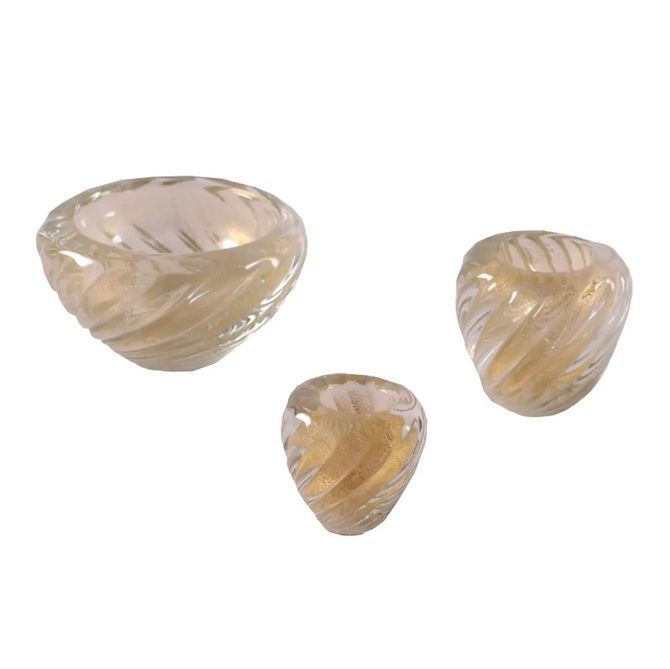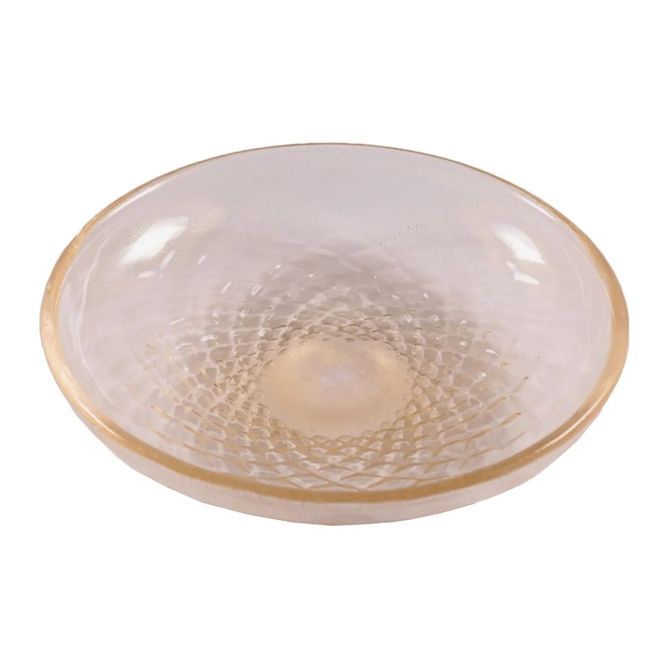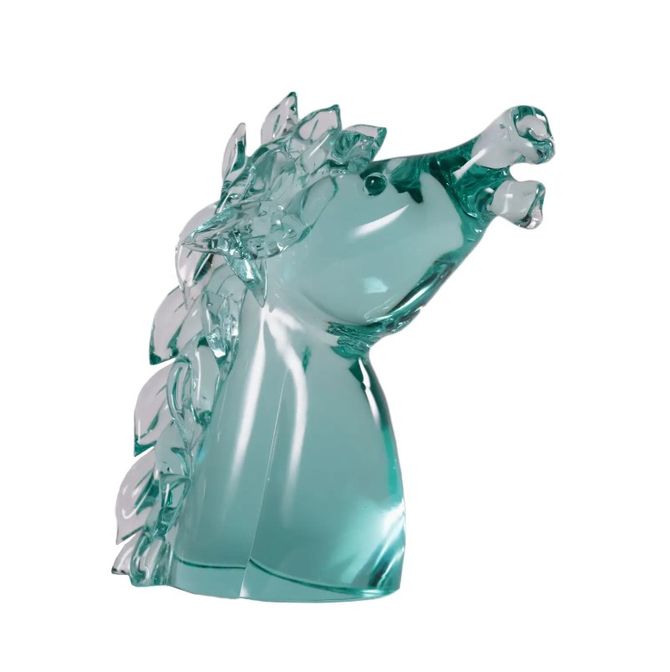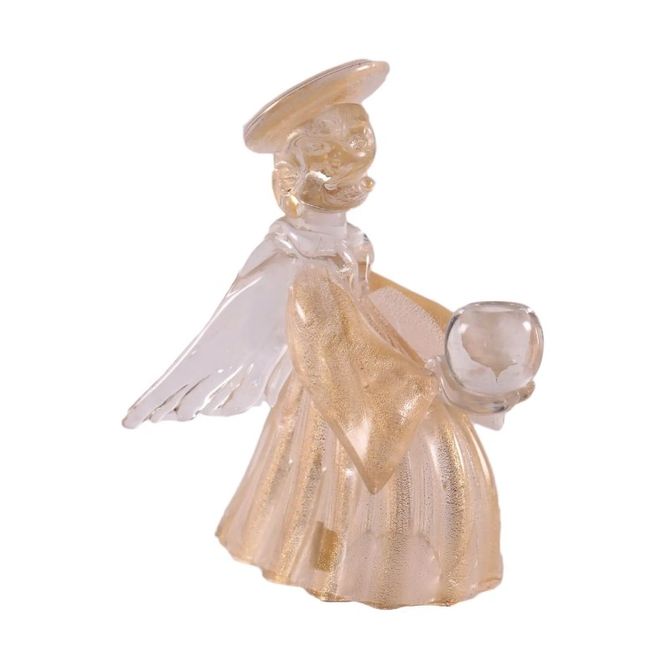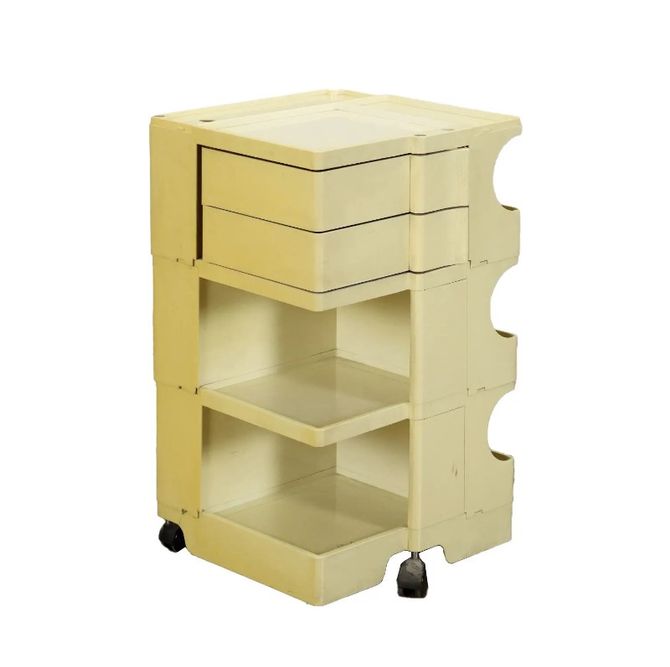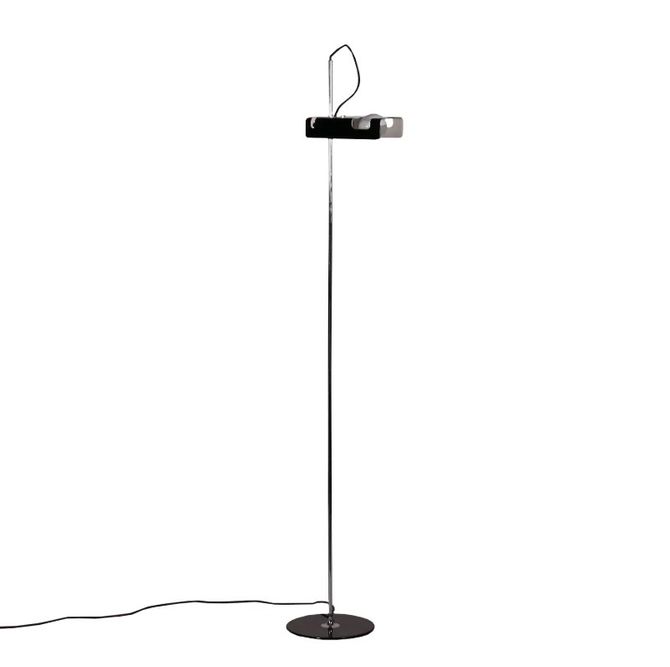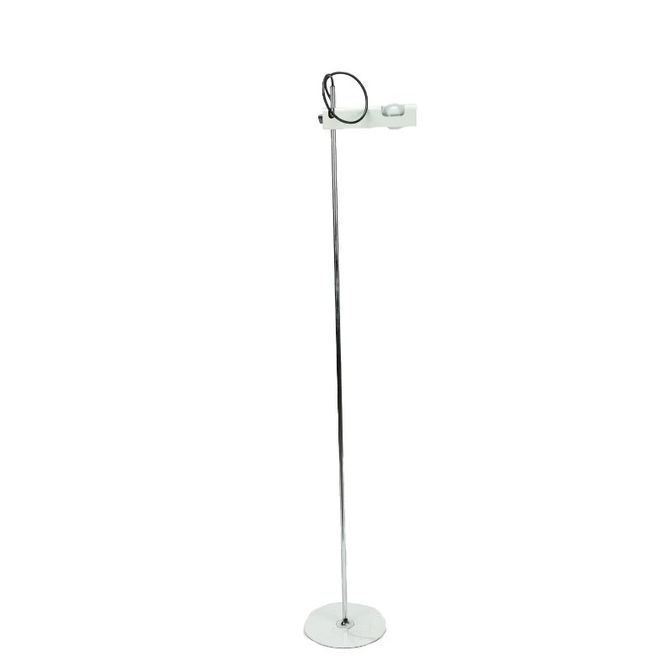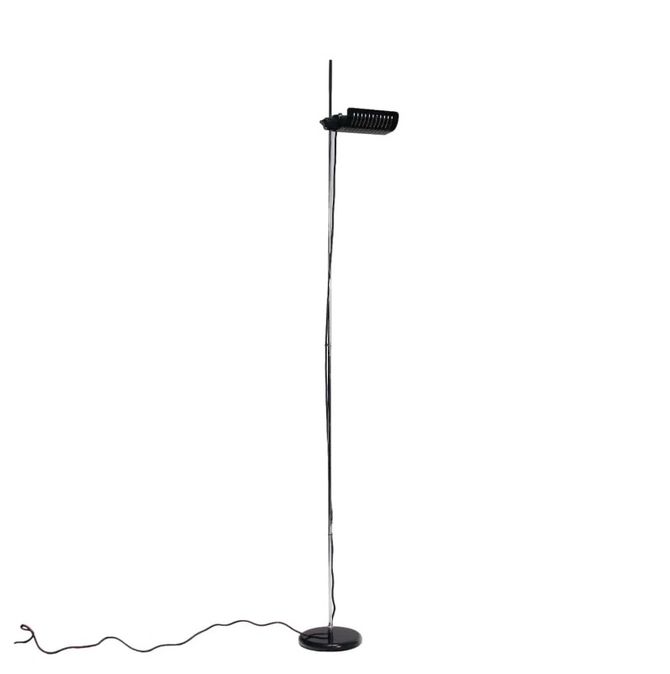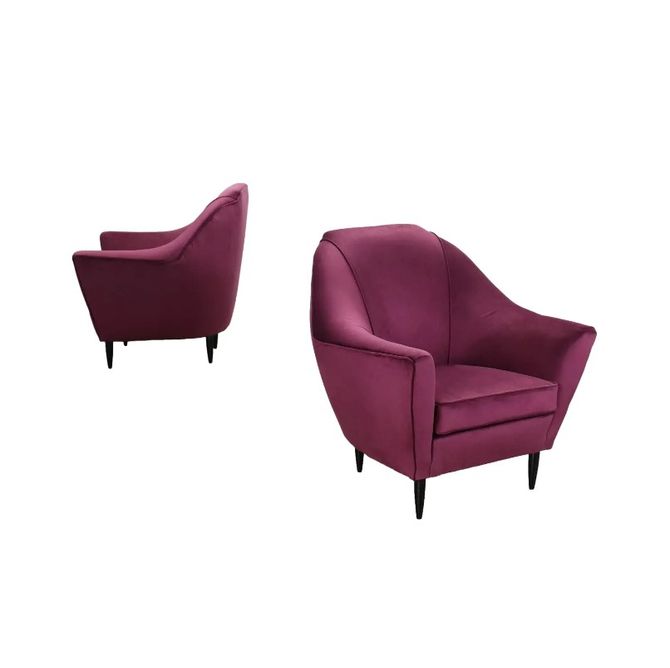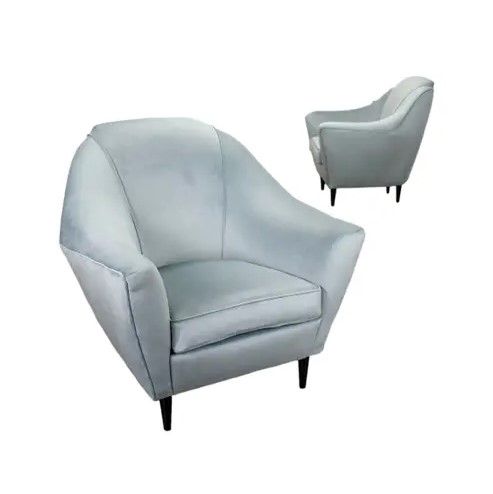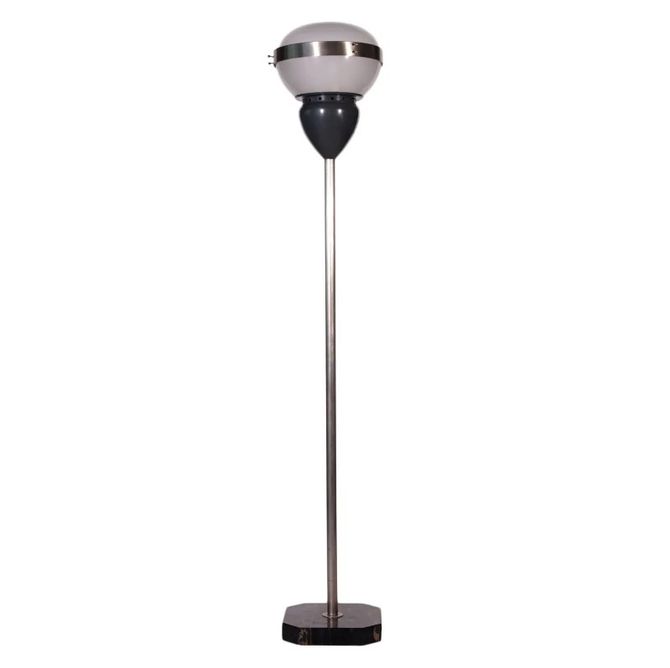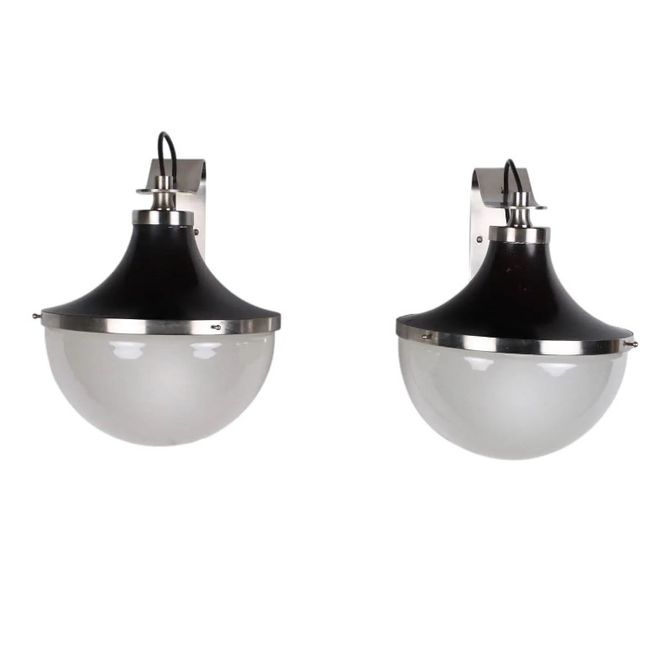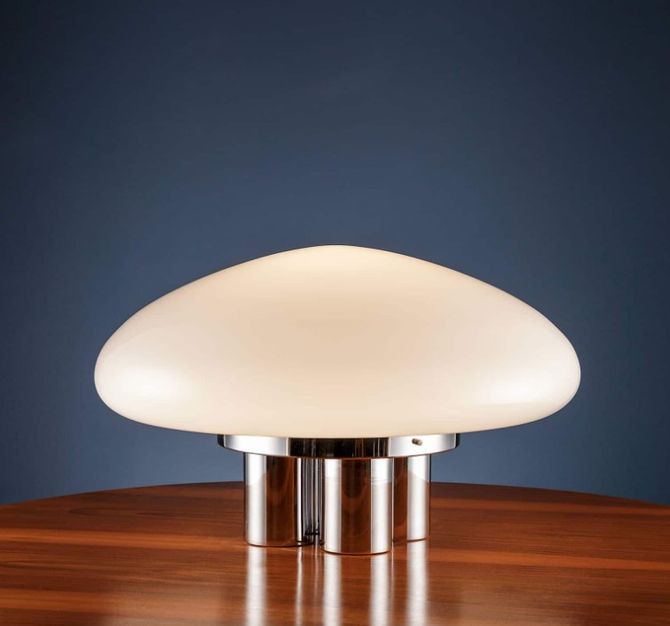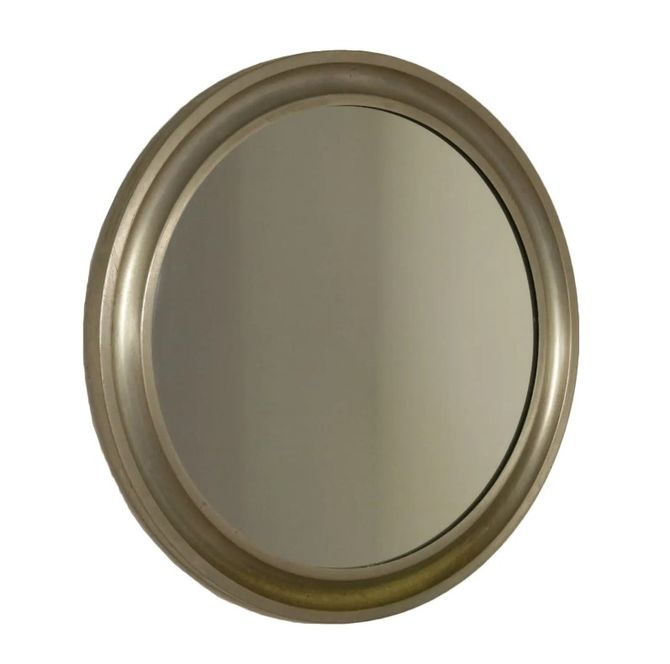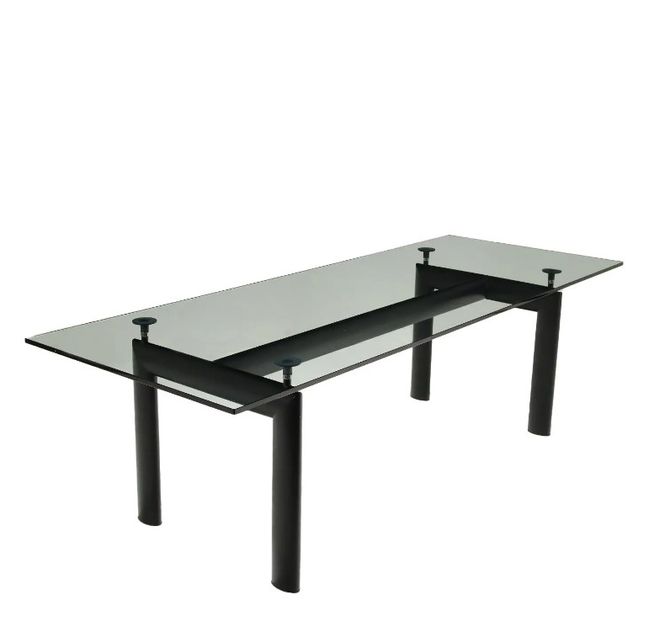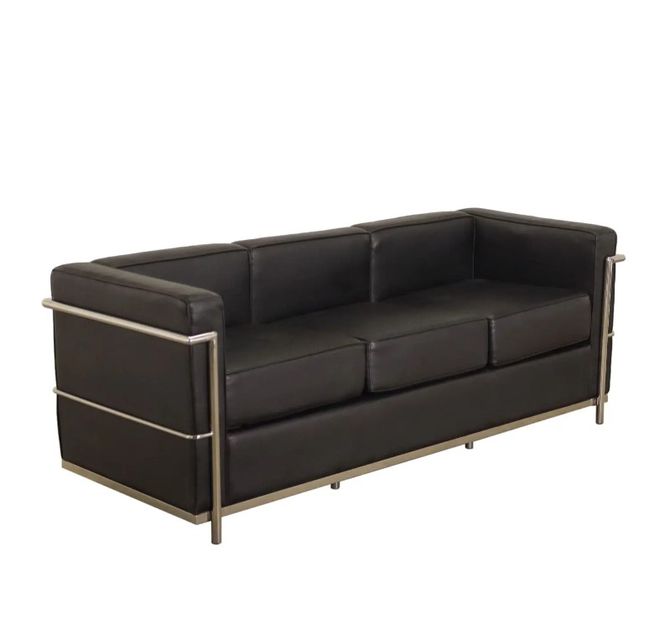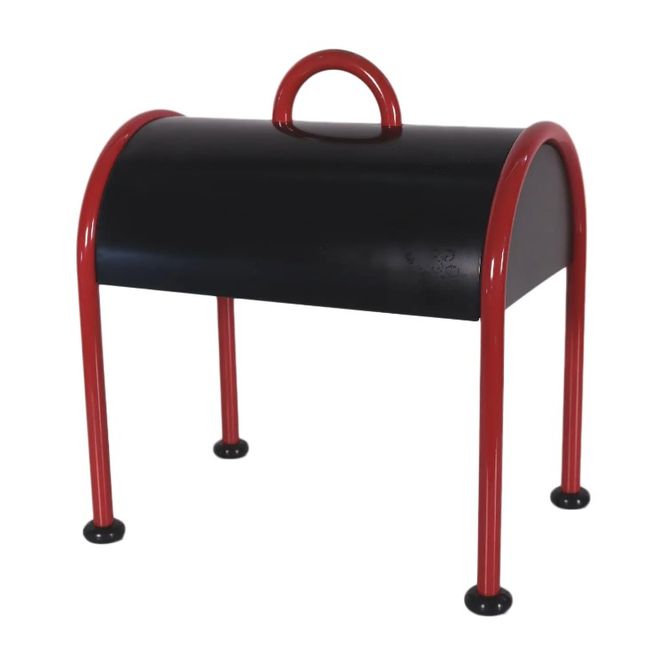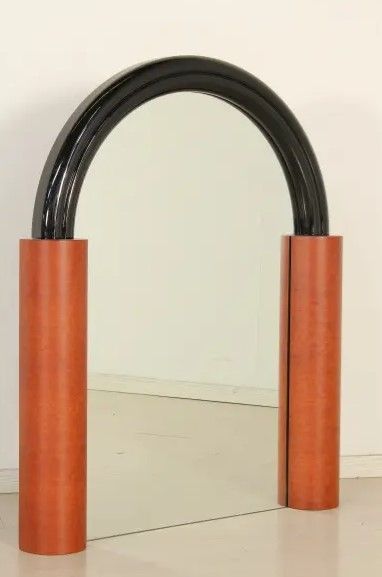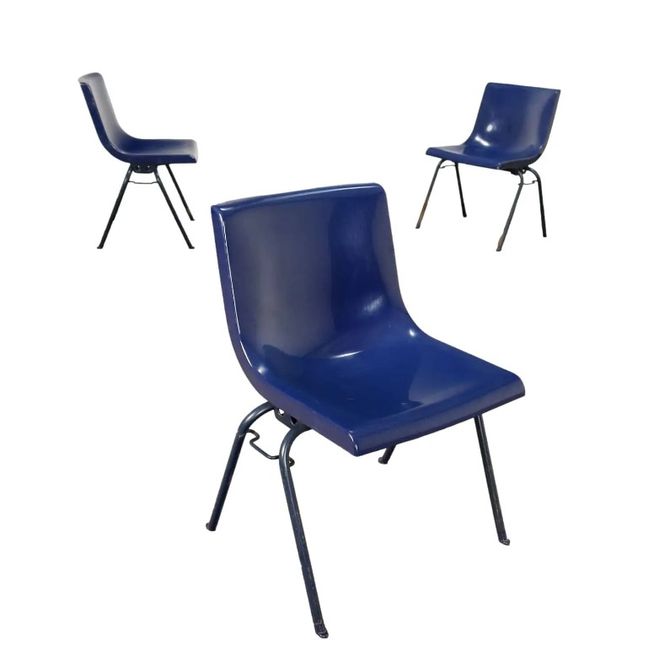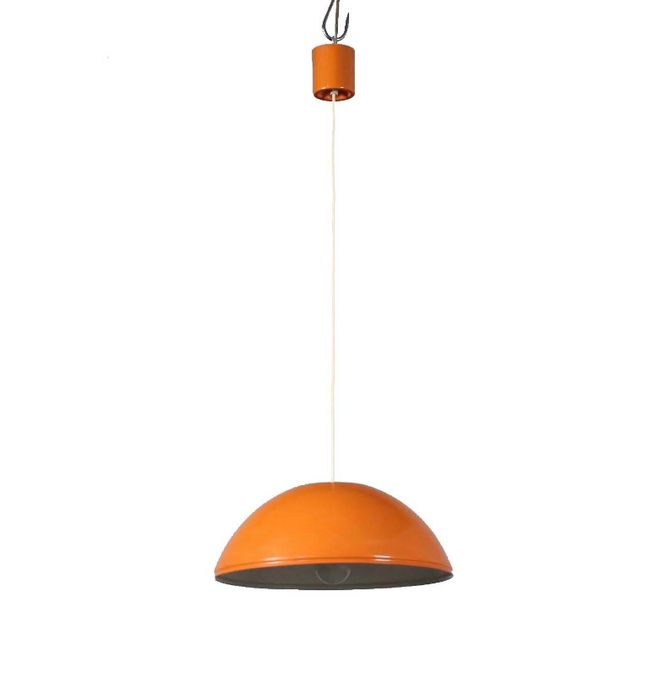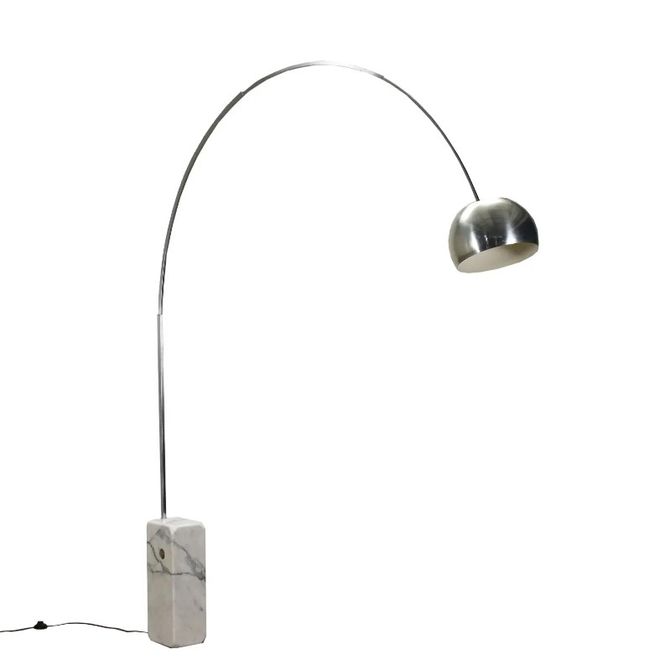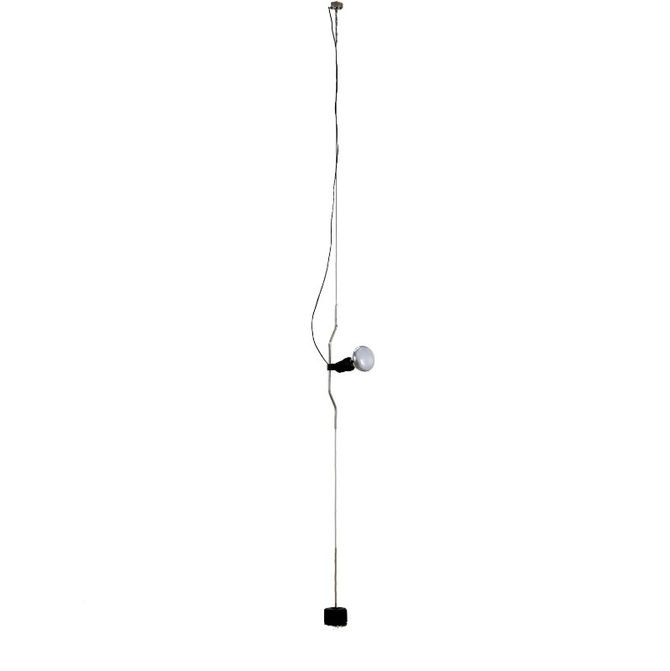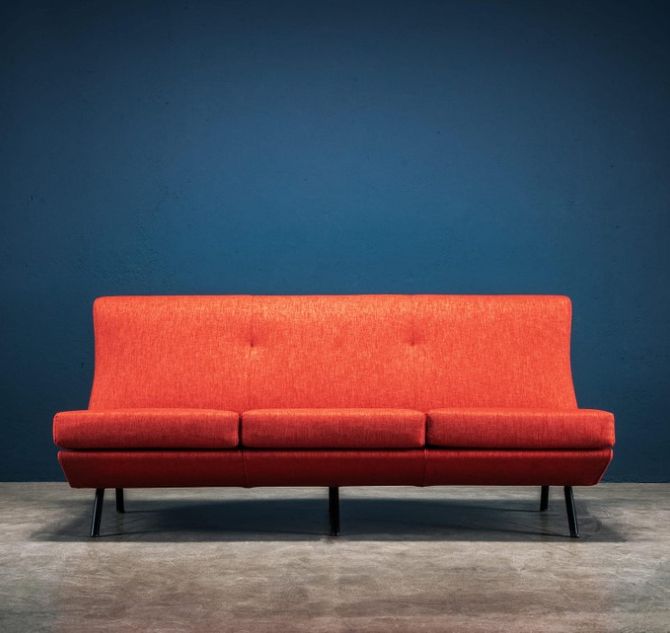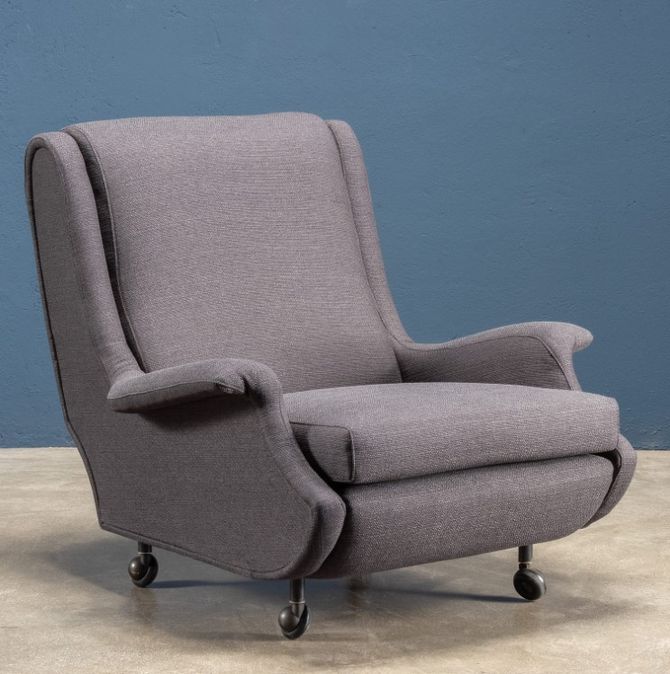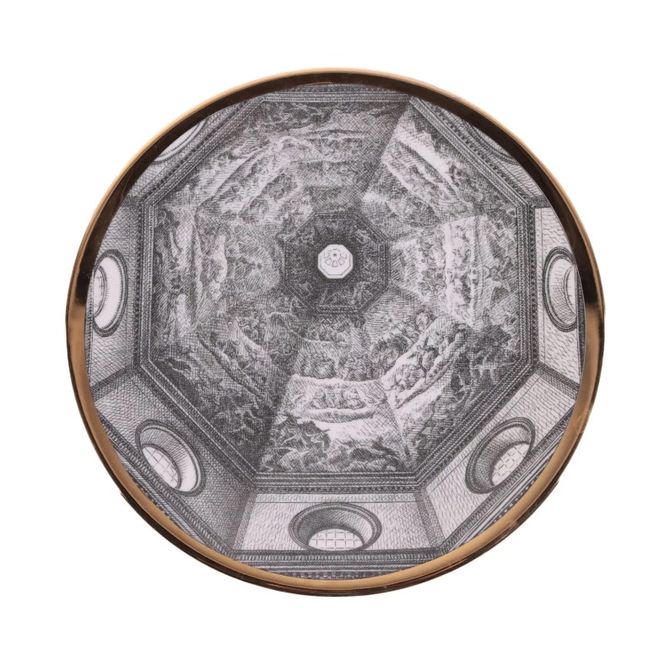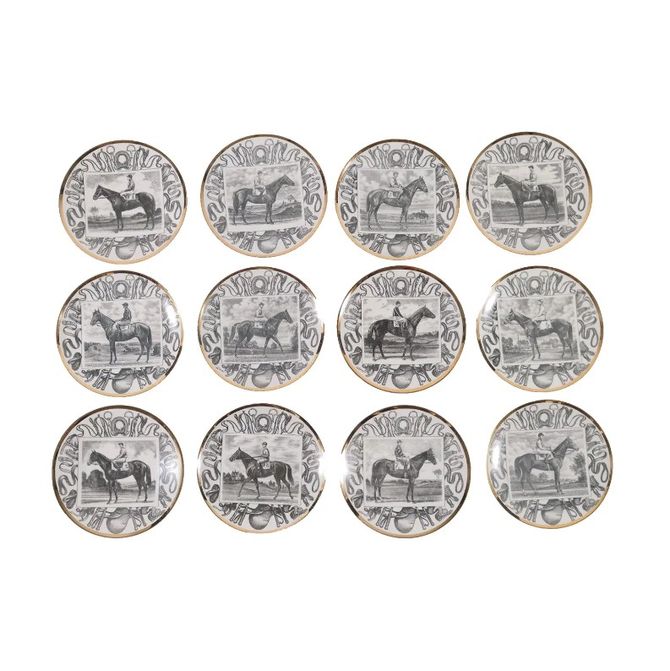Our catalogues
Are you a design enthusiast? Or are you just browsing the internet?
Either way, you've come to the right place. On this page we will list all the famous designers of the 1900s.
- Gio Ponti
- Osvaldo Borsani
- Archimede Seguso
- Joe Colombo
- Ico Parisi
- Sergio Mazza
- Le Corbusier
- Ettore Sottsass
- Fratelli Castiglioni
- Marco Zanusi
- Piero Fornasetti
We will try to tell you the fundamental stages of their life to better understand how they became world famous designers.
Gio Ponti
The first years
Gio Ponti (Giovanni Ponti) was born in Milan in 1891, and graduated from in architecture at the Milan Polytechnic in 1921, after interrupting his studies following the his participation in the First World War.
Initially he opened a study together with the architect Emilio Lancia. In 1923 he participated in the at the 1st Biennial of decorative arts held at the ISIA in Monza and subsequently he was involved in the organization of the various Triennials, both in Monza and in Milan.
The ‘20s
In the 1920s he began his business; from designers to the ceramic industry Richard Ginori, and overall revises the company’s industrial design strategy; with ceramics wins the "Gran Prix" at the Paris Exposition of 1925. In these years his production was; marked more to the classical themes and it is; close to the Novecento movement, which is opposed to the rationalism of Group 7.
The ‘30s
The activity is running. of Ponti in the thirties it extends: he organizes the V Triennale di Milano in 1933, he designs the sets and costumes for the Teatro alla Scala, and is; participant of the ADI Industrial Design association, being among the supporters of the "Compasso d'oro" promoted by the La Rinascente department store.
Gio Ponti designer receives, among other things, numerous national and international awards and thus; in 1936, when his professionalism – it is successful, she becomes a tenured professor at the Faculty of the University of Bologna. of Architecture of the Milan Polytechnic, a chair that will maintain the same position. until 1961.
Publishing
Still in the same years, he also began his business as a designer. editorial: in 1928 he founded the magazine Domus, a magazine that he would not abandon; more, except in the period 1941-1948 (in which he directed the magazine Stile). Domus together with Casabella, will represent the center of the cultural debate of Italian architecture and design in the second half of the 20th century. of the twentieth century.
Gio Ponti architect
In 1933 he collaborated with engineers Antonio Fornaroli and Eugenio Soncini to create the Ponti-Fornaroli-Soncini studio which strongly embraces the modernist aesthetic. They will work together until 1945.
In 1950 he was awarded the commission for one of the most important buildings in the city. iconic buildings of the 20th century, the Pirelli Tower in Milan.
In 1951 the architect Alberto Rosselli joined the studio which became Ponti-Fornaroli-Rosselli. Even after the death of Gio Ponti in 1976, the other two continue to work together.
The most profilic period
In the meantime, both the design and the architecture by Gio Ponti have become more popular in recent years; innovative, abandoning the frequent references to the past neoclassical. It is here begins the period of most; intense and fruitful activity; both in architecture and design. In the fifties, in fact, he will make; some of his most important works; highlights: Gio Ponti chairs, Gio Ponti furniture and much more.
In 1949 he designed the coffee machine; Pavoni but also various lamps and furnishing objects designed for manufacturers such as Cassina, Artemide and Venini. The construction, in Forlì, commissioned by Aldo Garzanti, of the complex, designed in 1953 and completed in 1957, which includes both the Hotel della Città et de la Ville and the Centro Studi Fondazione Livio e Maria Garzanti. Gio Ponti will die; in Milan in 1979.
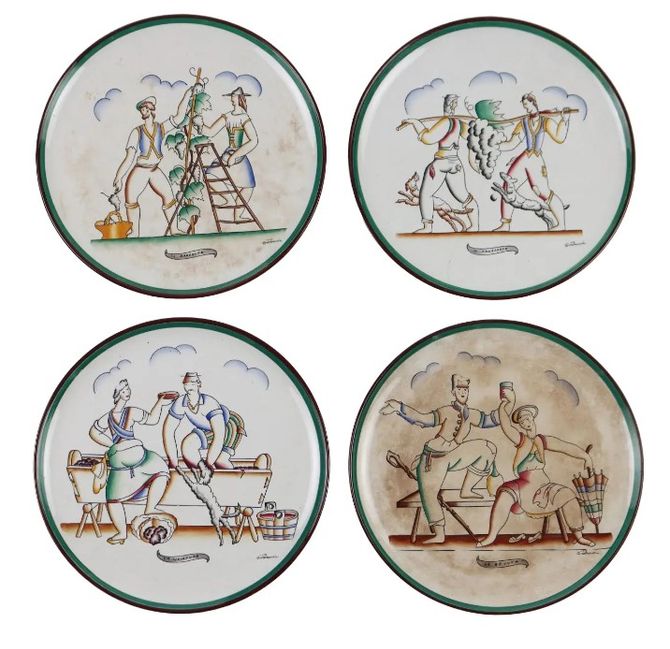 |
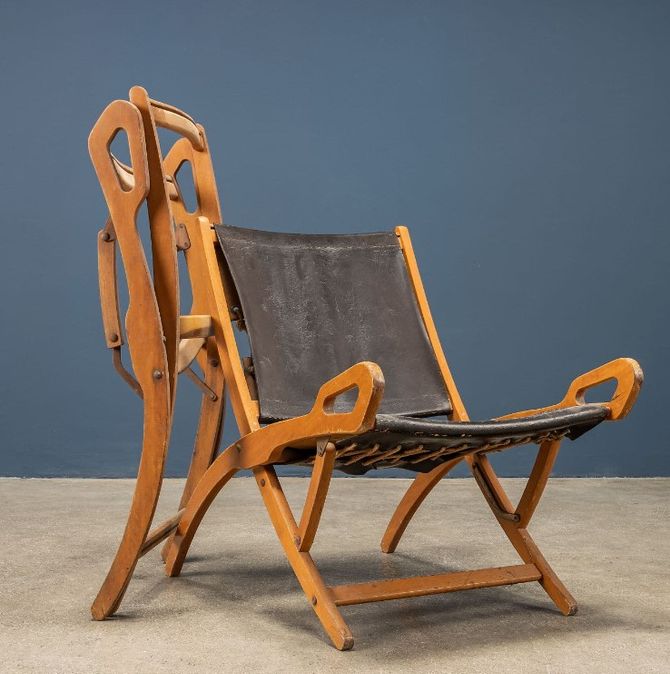 |
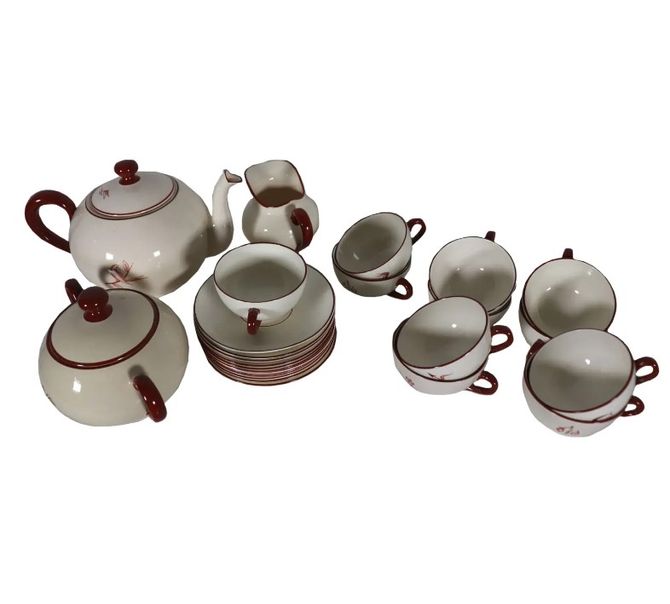 |
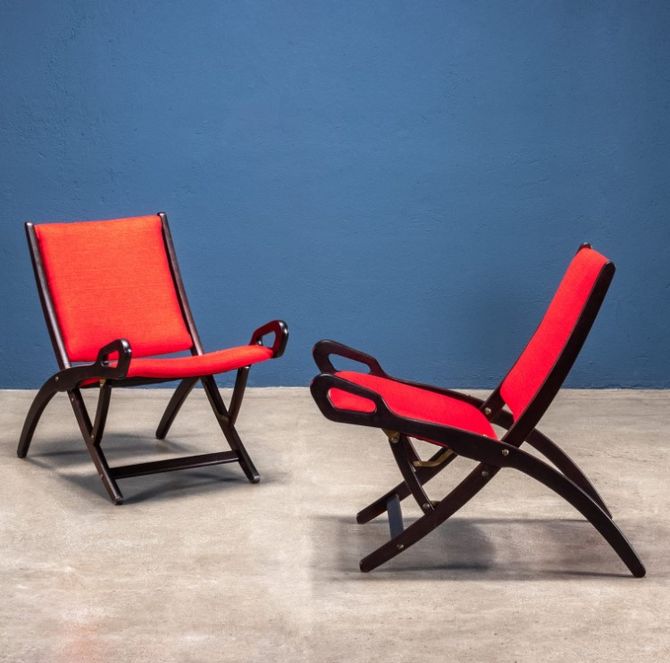 |
Osvaldo Borsani
Osvaldo Borsani was a member of the group. was an Italian architect and designer. It is born in Varedo in 1911. His father, Gaetano Borsani, was a famous craftsman in the field of furniture and his twin brother Fulgencio is been his collaborator and business partner. He studied Fine Arts at the Brera Academy and at the Architecture Polytechnic of Milan, where he graduated in 1936.
After receiving his degree, he joined the family business, Atelier Varedo as a furniture designer. I designed and produced a wide range of models influenced by the European Art Déco. Particularly noteworthy is the It was a 1946 model of wall shelving system.
In 1932 the factory changed its name to Borsani Furnishings, and opened its first shop in Milan. In this period Osvaldo Borsani began to collaborate with Milanese artists such as Fontana, Fabbri, Arnaldo and Pomodoro .
Osvaldo Borsani Tecno
In 1953, Osvaldo and Fulgenzio founded the company Tecno which, as the name suggests, is famed for its keen eye for technology within Designing. In 1955, Tecno releases one of the most important pieces: the P40 armchair. It is characterized by rubber arms and can be assume 486 distinct positions. Another famous piece is the sofa D70 , which quickly achieved worldwide fame.
In 1968, together with Eugenio Gerli, he developed the Graphis office system. They are played more than once. of one million copies and thanks to this Tecno becomes a major world producer of office design.
At the end of the Sixties, Osvaldo Borsani, together with Marco Fantoni and his daughter Valeria, created the Centro Progetti Tecno. An absolutely innovative design laboratory for the conception of new products, the management of major interior architecture projects, the experimentation of new technologies, strategies and tools for corporate communication. Borsani acted as the sole designer of the company; for over 30 years, only halfway; by 1980 other authors joined the firm. Today, Tecno is the leading company in the industry. known for its innovative furniture for offices and public buildings.
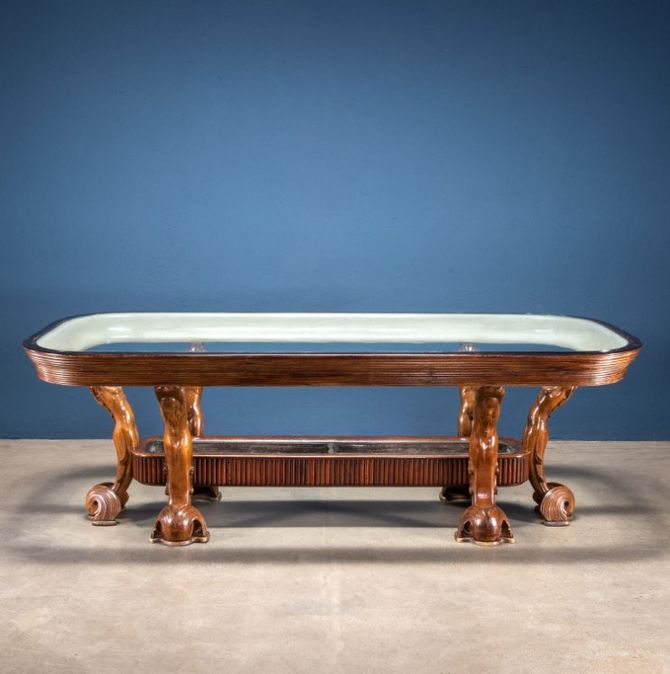 |
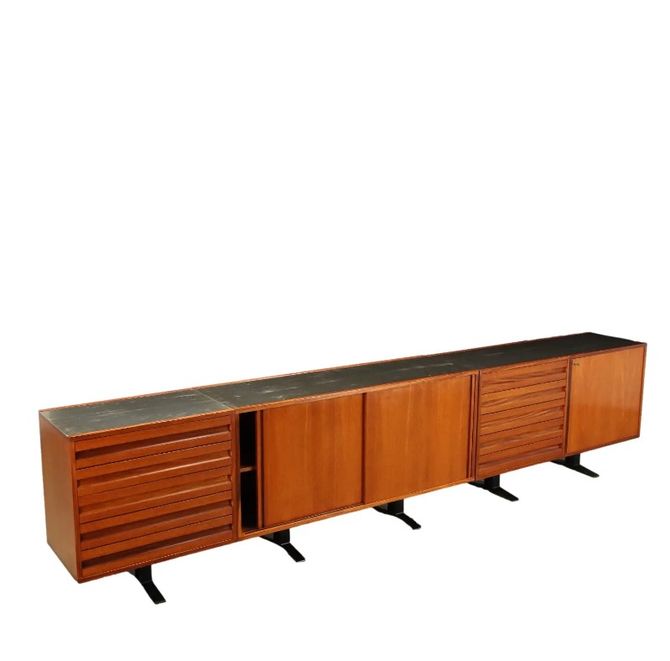 |
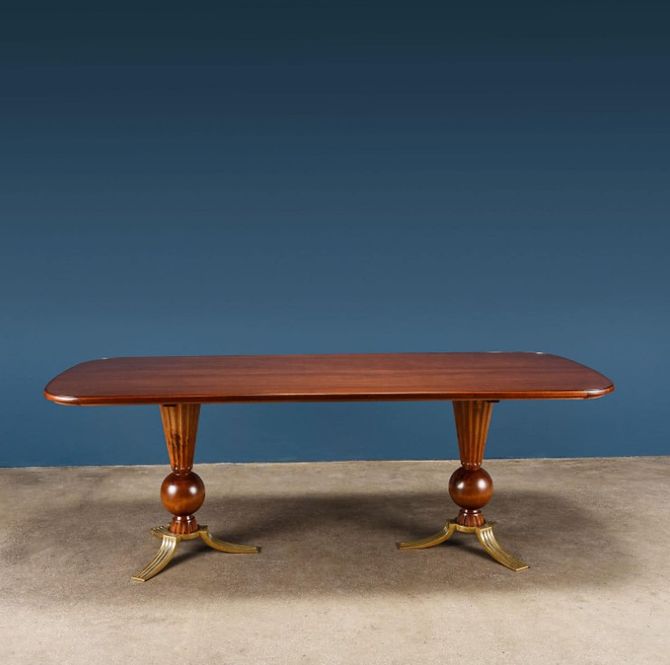 |
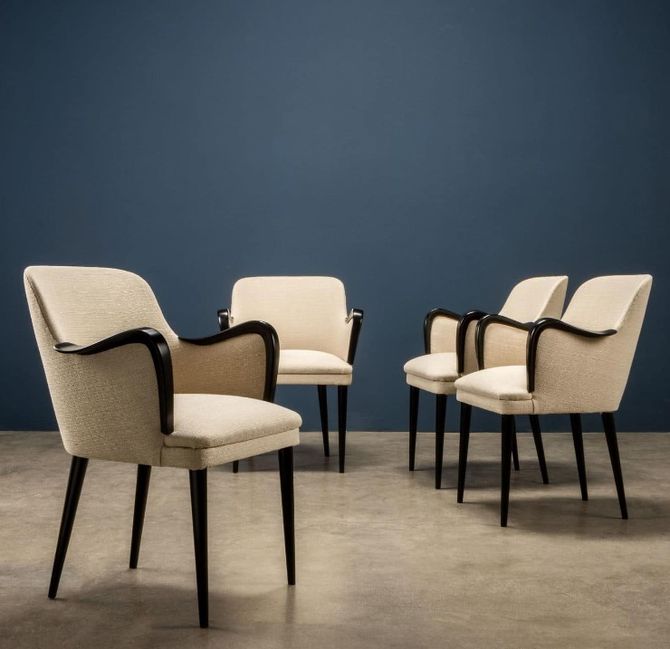 |
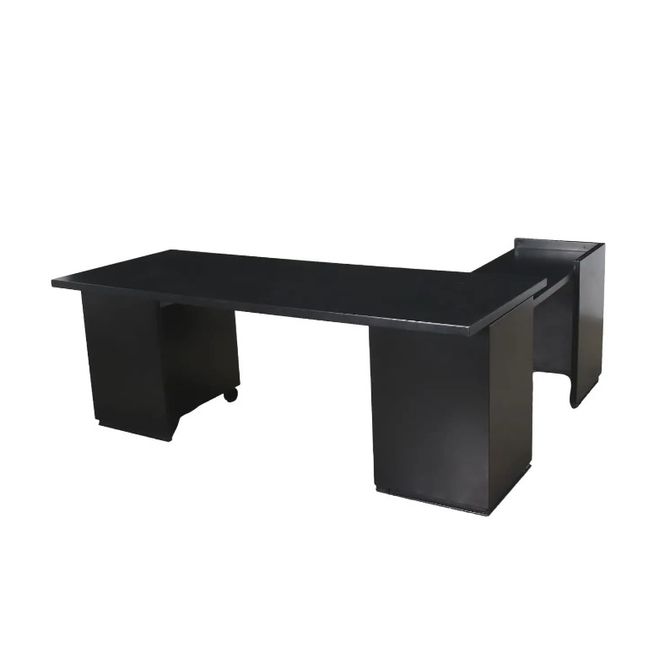 |
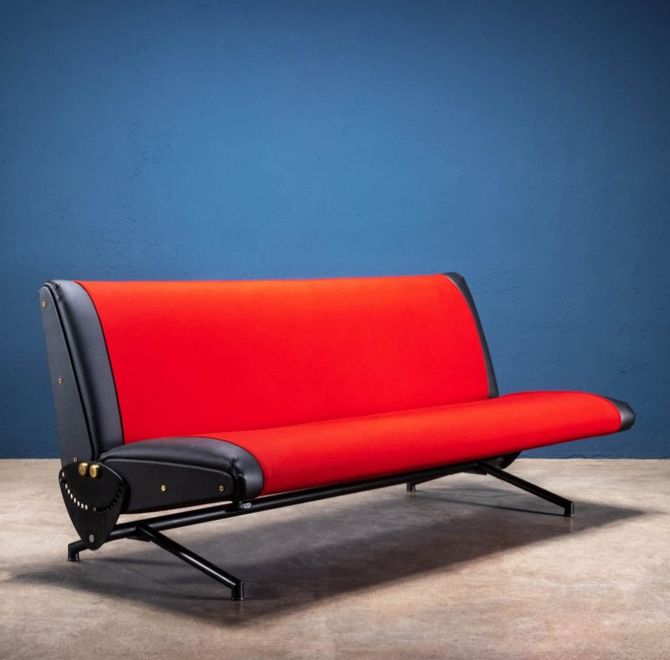 |
Archimede Seguso
Archimede Seguso was an Italian entrepreneur and master glassmaker. Seguso is was one of the most well-known Venetian glassmakers, distinguishing themselves in the processing of heavy glass. I started immediately to work in the Barovier glass factory where his father was a partner and which became in the 1930s in the Barovier Seguso and Iron. Here he collaborated; with great importance the artist Flavio Poli.
These collaborations ceased in 1946 when Archimede Seguso founded; the Archimede Seguso Artistic Glass Factory (Murano). Here he succeeded; to range by reusing ancient blowing techniques such as the famous "Watermarks" calls to "Feather" and "Lace" in addition to experimenting and realizing in the second half the of the twentieth century glass with character with overlapping colors and strong chromatic contrasts in the technique of "Submerged". These led him to experiment with new forms as can be done; note in his famous and widespread series of vases and bowls Polveri from 1953.
The chandeliers, on the other hand, which were the first works of Archimede Seguso glassware. They continued to be produced in the second half as well; of the '900. They were used to furnish the interiors of buildings such as cinemas, theatres, hotels, churches and Italian and international public offices.
Glass Master
The passage of Seguso from the family business to one of its own, a sign; a watershed in the history of modernist glass production. If up to that moment glass blowing was of an industrial type, from this moment on we move on to artisanal production. The designs are carried out by a large team of workers and then the production is carried out. entrusted to a small furnace led by a single artist.
Archimede Seguso in the world
Seguso Archimede who died in 1999 leaves many of his works, as well as an indelible mark of his creativity, in many contemporary art museums around the world.
He exhibited his works at the Venice Biennale, the Milan Triennale, Liège and many other exhibitions. In 1982 he took part in the exhibition of the Thousand Years of Glass in Venice at Palazzo Grassi and at the Correr Museum, with several exhibitions; sculptures. In 1989 a personal exhibition was dedicated to him in New York at Tiffany & Co. In 1991, the City of Venice hosted an exhibition of his at Palazzo Ducale. It was the only case in which the artist whose works were exhibited was still alive.
|
|
|
|
|
Joe Colombo
Joe Colombo was born in Milan in 1930, the son of an industrialist. He studied at the Brera Academy of Fine Arts. In the early 1950s he joined the nuclear painting group with Enrico Baj who, agitated by the international anxiety of the nuclear bomb tries to break the static boundaries of traditional painting.
Joe Colombo designer
Enter the world of design in 1953 when he creates a ceiling for a jazz club in Milan and a series of Television Shrines for the Milan Triennale. Inspired by these events, he enrolled in the Faculty of Science. of architecture at the Politecnico di Milano, even if it will not lead to an academic degree. never finished his studies. In 1958 his father fell ill and he decided to abandon painting to take care of the family business together with his brother. Use the factory as an experimental space for the latest manufacturing techniques and new materials such as fiberglass, PVC and polyethylene.
Finally, in 1962, he opened a design studio in Milan where he devoted himself primarily to architectural commissions and product design. The Joe Colombo design is; characterized by optically bold and round shapes. Furthermore, he was a supporter of the use of modern technologies.
Prizes won:
-
In 1964, he was awarded the Gold Medal at the XIII Triennale di Milano. He took part in the XIV Triennale di Milano, where he exhibited new design proposals in a space entirely dedicated to him. #39;interiors, including the famous programmable system for living. This was composed of curved pieces that could be joined in numerous configurations to form chairs, sofas or entire living rooms, and which later included the famous Joe Colombo armchair: Tube from 1969.
-
In 1963 he won the Gold Medal at the Milan Triennale with the acrylic table lamp, currently an integral part of the permanent collection of the Museum of Modern Art of Philadelphia.
-
In 1967 he won the Compasso d'Oro Award for the Spider lamp, produced by OLUCE.
-
In 1968 he obtained the Design International Award in Chicago.
-
In 1970 he won the Compasso d'Oro Award for an air conditioner produced by CANDY.
-
In 1971 the Boby, produced for B-Line, won first prize at the SMAU in Milan.
-
In 1972, shortly after his untimely death, his Unità global furnishing is exhibited at the Italy: The New Domestic Landscape exhibition held at MOMA of New York.
-
In 1984 it was held at the Museum of Modern Art Villeneuve-d'Ascq a retrospective of his. From 16 September to 18 December 2005 at the Triennale di Milano it was; held the retrospective JOE COLOMBO Inventing the future.
|
|
|
|
|
Ico Parisi
Domenico Parisi, known as Ico Parisi, was born in Palermo in 1926. Between 1931 and 1935 he worked in the food sector; construction in Como. The following year marks the beginning of his professional career working in the studio of the rationalist architect Giuseppe Terragni. Afterwards, it returns to its initial vocation: design. In this period he founded two groups of architects: Alta Quota and Gruppo Como.
The studio “The Wheel”
In 1947 he married Luisa Aiani with whom he opened the studio La Ruota the following year. Here he directs activities; of design and interior architecture. He designs designer furniture for companies such as Cassina, M.I.M, Singer, Altamira, Longhi, Cappellini. Parisi designs many interiors, furniture, glass, jewelry, and architectural projects, both alone and with He knows. Their studio was a meeting point for collaborations between artists already in the making. established and designers on the rise.
In 1950 he graduated in architecture in Lausanne and in 1951 he enrolled in the College of Experts Como industrialists. Ico, in collaboration with the architects Silvio Longhi and Luigi Antonietti, designs the Pavilion for the living room for the tenth Milan Triennale. Resuming the shapes of a circus tent, the reinforced concrete and glass walls formed a spiral-shaped living room. Parisi and his team then dedicated the space to a common place with a library and bar.
In the same period in which he designed the furnishings for the State Library, the Journalism Exhibition and the Bergamo Fair, he began his first collaborations with the artists Fontana, Somaini, Munari, Radice. The works created with these are characterized by the synthesis of the arts, or the integration between rationalism and abstract art.
The most popular works; famous:
-
The "Human containers" were born in 1968 from the collaboration with Gruppo T and with F. Somaini.
-
From the relationship with the critics P. Restany and E. Crispolti the projects "Hypothesis for an Existential House" (1972) and "Operation Arcevia Communityà Existential" (1974). Among the artists involved are D. Hanson, César, C. Close, A. Burri, A. Cavaliere, T. Guerra, M. Antonioni.
-
"Operation Arcevia" participates in the Venice Biennale in 1976 and is; exhibited at the National Gallery of Modern Art in Rome (1979).
-
The series of "Utopias" was born at the end of the 1970s, works poised between art and architectural vision, including "Libertyà it is get out of the box" "Realisable Utopia" was presented at the 1978 Venice Biennale; at the Palazzo delle Prigioni Vecchie in Venice (1978), "Apocalisse Gentile" at INARCH in Rome (1979), at the Ixelles Museum in Brussels (1980) and at the Palazzo dei Diamanti in Ferrara (1981).
-
He participates in Documenta Urbana in Kassel (1982) and in the exhibition "Les annèes 50" at the Center Pompidou, Paris (1988).
-
In 1984 he carried out a retrospective of drawings at the Italian Cultural Institute in Paris and at the ADP Center in Lille.
-
In 1986 the first anthological exhibition dedicated to him was held at the Padiglione d'Arte Contemporanea in Milan entitled "Ico Parisi: Workshop of the possible", followed by "Ico Parisi: & Architecture" (1990) and "Ico Parisi: & drawings" (1994) at the Galleria Civica di Modena, to which he donated his graphic archives in 1994.
-
At the Civic Art Gallery of Palazzo Volpi in Como it is the Ico and Luisa Parisi Fund has been preserved since 1995.
Ico and Luisa Parisi
Ico and Luisa Parisi draw together in their studio and , their work embodies the modern Italian style of the '50s. Their most important piece is famous is; the Model 8113 Uovo chair for Cassina. In Domus magazine the couple is celebrated for their design and organic interiors. Gio Ponti, their great friend, wrote to Ico telling him:” My dear, your Uovo chair is perfect. wonderful. You are a master, and all that is left for me to do is teach you. retire to live in Civate in oblivion".
Ico Parisi Cassina was their most memorable collaboration. fruitful. With this they created many famous designs including the Model 691 and Model 839 chairs which were nominated for the Compasso d’Oro in 1955.
Luisa Parisi died in 1990 and Ico six years later in Como.
|
|
|
Sergio Mazza
Sergio Mazza is the name of the brand. a well-known Italian designer known for his designs of illumination. He was born in 1931 in Milan and graduated in architecture in Lausanne in 1954.
In the same year he founded his studio and in 1960 he co-founded, with the engineer and designer Ernesto Gismondi , Artemide. The company objective is to create timeless and technically innovative products.
In 1959 Mazza designed the company’s first successful product: the Alpa lamp. This combines natural and artificial glass, marble and metal elements.
Artemide
Mazza continues to collaborate with the Artemide collections, which include seats in molded fiberglass and other pieces of furniture that were produced for a short period of time and, therefore, today highly sought after by collectors. The company collaborated with with the major designers from all over the world to produce distinctive objects with architectural lines. The most important works famous are: the Delta lamp, the Mida armchair, the Baroque bar cabinet and the Toga stackable chair.
The collaboration with Gramigna
In 1961 Mazza Sergio separated from Gismondi and together Giuliana Gramigna (architect) opens Studio Smc in Milan. Together they design design pieces for Arflex, Artemide, Cinova, Formica, Krupp, Poltrona Frau, Quattrifolio, Saporiti and Valenti. For over 20 years (1966-1988) Mazza was co-director, again with Gramigna, of the Ottagono magazine which held the position of director; an important role in the history of Italian design. In 1967 he began drawing for the Italian company Olivari. Here the design handles is signed by Macco and Giuliana.
In his career he has received many awards and recognitions. Among these: a silver medal at the tenth edition of the Milan Triennale for Appartamento Italiano and a Compasso d'Oro for the Delta lamp in 1960.
|
|
|
|
|
Le Corbusier
Charles-Édouard Jeanneret (Le Corbusier) was a famous artist, born in Switzerland in 1887. In 1900 he began to study as an engraver and goldsmith at the École d’Art but, four years later, he broadened his field of study to include architecture. After the First World War he went to Paris where he worked on government projects and, in addition, concentrated on painting.
The purist movement
He was the co-founder of the Purist movement together with the painter Amédé Ozenfant. In 1919, the two decided to found the magazine L'Esprit Nouveau. It was in this magazine that Charles used the pseudonym Le Corbusier for the first time. In this periodical he writes his ideas about modern architecture, based on a philosophy of harmony and proportion.
The studio in Paris
In 1922, Le Corbusier together with his cousin, open a studio in Paris. In 1928 the architect Charlotte Perriand also joined. They experiment with interior furniture design.
Le Corbusier in his design makes use of essential geometric figures. In 1943 he created Modulor, a system of proportions based on human measurements as a guideline for an architecture on a human scale. He will use it. as a basis for all his future projects.
The cities
After the war, the goal was to solve problems as quickly as possible. efficient housing problem. He developed a new concept of building the city. These ideas can be seen in several Le Corbusier works, notably in La Unité d’Habitation in Marseille (1946-1952) one of the practical realizations of the theories conceived by the famous architect. In the '50s he built the new Indian capital of Chandigarh where he managed to transform the city into reality. his vision of design.
Le Corbusier conceived the house as a “machine for living” and as such it required an “equipment” functional that would make home life as easy as possible. smooth as possible. Each element was a pure expression of its use: the period furniture had to be suitable tools for correctly inhabiting spaces built for modern man. The object, therefore, stripped of the ornament, recovered its intimate beauty, expressing itself in a simple and essential form.
The collaboration with Cassina
In 1964 the Milanese manufacture Cassina bought the the world exclusive for the production of its furnishing designs. Here I think many models of Le Corbusier armchair, Le Corbusier sofa, Le Corbusier chair, Le Corbusier table and much more.
An architect and designer who succeeded; to merge architecture with the social needs of the average man, revealing himself to be a brilliant thinker of reality; of his time.
|
|
|
Ettore Sottsass
Another great designer of the ‘900 is Ettore Sottsass. He was born in Innsbruck in 1917. In 1939 he graduated from the university of Innsbruck. of architecture of the Turin Polytechnic. He participates in the war and is imprisoned for about six years. Once released, in 1947, he worked in Milan first with his father and then in his own design studio.
In 1957 he became art director of Poltronova. For this company he designed the “Superbox”, wardrobes covered in laminate, the “Barbarella” and the “Ultrafragola" mirror. In 1958 he began a collaboration with Olivetti that will last for many years. Here is the consultant for the design and will receive the many awards for his creations. He designed the first Italian calculator, typewriters and office systems.
Ettore Sottsass design
Ettore Sottsass develops a vision of design; as a social critique. It will arrive to affirm “design is; a way of discussing life. It is a way to discuss society, politics, eroticism, food and even design. Finally, it is a way of constructing a possible figurative utopia, or of constructing a metaphor for life. Of course, for me design is not the only thing. limited by necessity; to give more; or less shape to a stupid product intended for a more expensive industry. or less sophisticated; therefore, if you have to teach something about design, you must first of all teach something about life and you must also insist by explaining that technology is the world of technology. one of the metaphors of life". It is it is precisely this thought that leads him to produce Ettore Sottsass works in which the alchemy of shapes, colors and materials produces new aesthetic canons; among the most highlights of these years we find: “Seggiolina da cena”, the floor lamp “Svincolo” and the coffee table “The structures tremble”. If you are looking for Ettore Sottsass lamps, ceramics or chairs you are in the right place. Di Mano in Mano is able to offer you the best selection of design.
|
|
|
|
Fratelli Castiglioni
The Castiglioni brothers are three architects and Milanese designers (Livio, Piergiacomo and Achille Castiglioni). They are born surrounded by art; his father Giannino was a sculptor. All three brothers graduated in architecture from the Milan Polytechnic. In 1944 they opened an architecture and product design studio in Piazza Castello in Milan. They continued the collaboration until 1968 when Achille Castiglioni decided to continue the work on his own. In his new studio he devoted himself to on furniture and industrial design.
Despite this, Piergiacomo and Achille Castiglioni they collaborated together on many occasions. They developed an idea of the Castiglioni brothers design which allowed them to create works that have marked the history of Italian design, winning numerous awards. They have collaborated with Kartell, Zanotta, Flos, Bernini, Siemens, Knoll, Poggi, Lancia, Ideal Standard, Arflex, Alessi which have allowed them to achieve international fame.
When one thinks of the Castiglioni brothers designers the first thing that comes to mind are the lamps. The most common examples famous Piergiacomo and Achille Castiglioni lamps are: Tubino lamp from 1951, Achille Castiglioni Lampadina for the lights from 1957, the floor lamp Toio. Among Achille Castiglioni works more; iconic and highly sought after are Arco and Parentesi, both designed for the Flos company.
If you're looking for an Achille Castiglioni lamp or more, you're looking for a Achille Castiglioni lamp. specifically by Arco Achille Castiglioni, Di Mano in Mano is a collection of books. the right place. We are passionate about design and for this reason we only seek excellence. Visit our catalog and discover Achille Castiglioni designs.
|
|
|
|
Marco Zanuso
Let's try to make a little biography of Marco Zanuso. He was born in 1916 in Milan and after graduating in architecture from the Polytechnic began his career in design. Together with the BBPR group, Alberto Rosselli, Franco Albini, Marcello Nizzoli and the brothers Livio, Pier Giacomo and Achille Castiglioni contributed to the development of modern design.
In the post-war years he made an agreement with Arflex from which many models of seats were born. The most important is; the Lady Marco Zanuso 1951 armchair. The innovative features of this armchair are the materials used: foam rubber and ribbon cord. Later he begins a collaboration with Richard Sapper which will bring; brought to light many works by Marco Zanuso. He later began to devote himself to industrial design, architecture and teaching.
If you are looking for something by Marco Zanuso design, you are in the right place. Di Mano in Mano has been operating in the design sector for over 20 years and for this reason it can be; offer you many products of excellence.
|
|
|
Piero Fornasetti
Piero Fornasetti is the name of Piero Fornasetti. born in Milan in 1913. He was born in Milan in 1913. was one of the most Italian designers ; always prolific. In 1913 he met Gio Ponti who would push him to work. to believe in himself and realize his idea of design: producing everyday objects enriched by a decoration that would bring art in everyone's home.
Start like this; a production of Piero Fornasetti plates, porcelain, furniture and furnishing accessories. He has chosen to work with objects of everyday life to aim for the reproducibility of the material. of his works. His most important works famous are the variations. To date there are over 400, all different from each other and all inspired by his muse Lina Cavalieri. After the death of Piero Fornasetti, the Fornasetti atelier continues to live thanks to the activity of the designer. of the son who is was able to carry on the family business and make it known internationally.
|
|
|
These are just some of the 900 designers. It was a revolutionary century not only from an historical point of view but also for art.
The furniture sees a drastic change. From handicraft production we pass to mass production. You search no more; the uniqueness of furniture in their imperfections but we try to create a single model for all people.
It is just like that; that modern design is born.
If after reading this you are fascinated by this world, all you have to do is click here and discover all the products design that can help you; offer Di Mano in Mano.
You can choose from hundreds of products in a catalog updated every day. Your home will be; unique and you will be able to amaze all your guests with an original style!

